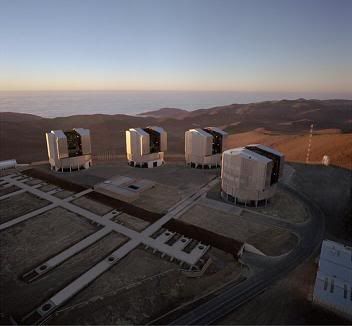Do you see the above image? It is a visible-light image of the star T Leporis. (click image to enlarge). It does not look like much you say? Well, you are an ignorant fool. Ha! Really though, this image may be the single sharpest resolution visible-light image color ever taken by humanity. Before describing what it is we are seeing, you must understand how this image was taken and how far away T Leporis is from our Earth.
The resolution of this image is about four milli-arc seconds. A minute of arc, or an arcminute, is a unit of angular measurement, equal to 1/60th of 1 degree. 1 degree is defined as 1/360th of a circle. 1 minute of arc is 1/21600th of a full circle, quite small. A second of arc, or an arcsecond, is 1/60th of an arcminute, and a milli-arc second is 1/1000th of an arcsecond. That is an incredibly tiny part of a degree, much less of the view of the night sky. That lets you see how ridiculously tiny the region of space pictured in the above image is. To use an analogy that fits our human scale,
. . .one should realize that the star appears, on the sky, as small as a two-story house on the Moon. ( ESO (European Organization for Astronomical Research In The Southern Hemisphere ) )
Picture trying to see a two-story house on the Moon from the surface of the Earth. It is nearly inconceivable, but in effect, this is what was accomplished by the scientists at ESO. Now, what you are seeing is a very old star. "The central disc is the surface of the star, which is surrounded by a spherical shell of molecular material expelled from the star."
The star T Leporis is HUGE. It is just enormous. Here is an image comparing the size of T Leporis and it's outer ring of molecular ejecta, to the size of the Earth's orbit around our Sol. (click image to enlarge)




No comments:
Post a Comment